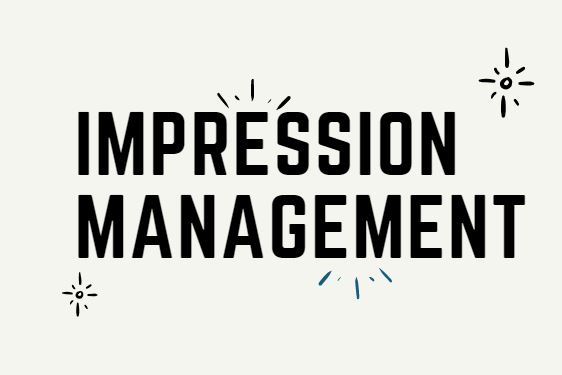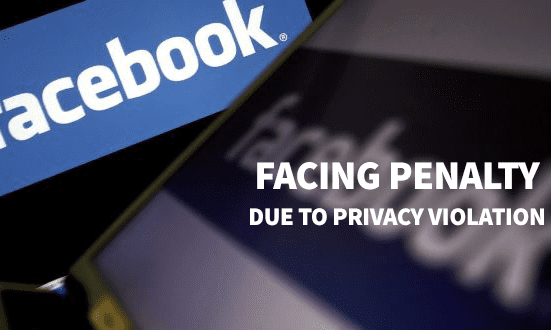Managing impression is a logical framework that making an impression for people and to the teenagers has assumed a form of filler in modern times. The main claim exists due to first impression influence on the perception of people and it is based on unconscious attitude.
What is Impression Management?
Impression management networking settings examine the interactions between individuals, which constitute the human lives and makeup. People spend their lives interacting and this is especially essential in every person’s life since it shapes the way the person views and understands them.
Social interactions like Impression management merge the different aspects of self and self-social relations in determining their general growth. The understanding of this title leads me to understand that this study is about the relationship between today’s main method of interaction and the impact it has on the people and especially those who are very active in the social media and the digital platforms.
The role of teenager for creation and developing attention to attain their interest with the use of social media aims to determine this.
The author of this text, Danah Boyd examines the impressions of another acclaimed writer, Effin Golfmann, who has been among the researchers and writers examining this topic for over five decades to date.
Goffman was the very first writer to state that, interactions influence the image that is presented by any individual. Golfmann further stated that people create certain impressions in order to maintain certain image that they felt fit with their image of self.
Why Impressions Management Matters?
The power of impression cannot be ignored today. The main reason is the effect and influence related to it that impress others and make them to act or respond accordingly. First impression is the substance that creates powerful words. It acts like built in form and presents the style of narrative.
All of us have conscious minds and they assess and judge everything new in seconds. This is the main cause of defining a personality and providing statement about any particular matter.
Making an impression for people and especially the teenagers has become an issue can almost be compared to navigating a land mine filled location. The teenager way of creating and getting the attention they need and require as per Danah gets more complicated especially with the use of social media terms to determine this.
Effin Golfman argues that the impressions that we make on others are determines mostly by the facts that are presented and what those impressions bring back.
Meaning that, whatever we put up on social media or any other source and the feedback received, determines our actions and to be more exact, the behavioral change in teenagers.
The text is meant for both the parents and the guardians and to an extent the young people in an effort to help them understand self and each other. The main point being understanding social interactions and how they influence the image of each individual.
While Danah Boyd is a native of Pennsylvania and a technological and social media scholar. She founder of the data and research center and remains the president.
She also works as a principal researcher with the Microsoft research center. She is a credible source especially from the fact that she already works with the biggest research centers in the world. People spend most of their time communicating with one another. Such interactions design one’s perception of themselves.
Accordingly, one’s perception of themselves is evident in the manner they conduct themselves in the course of such interactions.
Symbolic interactions take hold of the continuing process between an individual’s social interactions; one’s self, and their connections to the establishment of meaning. The mutual interaction between self-identity and interactions is hard to ascertain.
Dana explores the issues that come up with the struggle the young people go through in impression management in networking settings especially on Facebook and Instagram.
Dinah’s arguments are based on Effin Golfmann take on impression management especially on the point that what is given off and what is received determines the characteristics of a person or people.
The rebellion and actions that were the major ways of making an impression in the past eras, whereby making an impression involved either taking drugs to fit in with a certain stereo type, or dressing in a particular way, or even the music of the day, have long been replaced by the social media. The era of social media being center of how people view or live their lives is very much here.
Dana explores this and states that in today’s world, the teenagers and the young people have multiple identities. In her study, she continues to examine how the online life and engagement continue to influence the identities and the characters of the young people. Accordingly, as seen above, people create certain impressions in order to maintain certain image that they felt fit with their image of self.
The social media has seen the rise of stars and has been a very good income earner for many innovative and creative young people.
Yet, this has also been detrimental to the same young people, especially where the young people are quick to copy or emulate things done on social media without really understanding the concepts.
The Symbolic Interaction
People spend most of their time communicating with one another.
Such interactions design one’s perception of themselves. Accordingly, one’s perception of themselves is evident in the manner they conduct themselves in the course of such interactions.
Symbolic interactions take hold of the continuing process between an individual’s social interactions; one’s self, and their connections to the establishment of meaning.
It is clear that mutual interaction between self-identity and interactions is hard to ascertain. Young people have turned to social media, in a bid to show the world they also live a great life, and in the process, they have created a different reality, which is not as per the reality of their real lives.
The struggle to maintain impression management, leads to depression and peer influence, which is beyond any that has been experienced by any other generation in the past decades.
Accordingly, it is argued that human actions are typically objective-oriented and that the identification of people is characterized by one’s objective-based behavior. The objective refers to a prospective affair that a person is dedicated to attaining or sustaining.
The primary objectives are linked to one’s desire to prompt behavior change in another individual while dealing in interpersonal influence efforts.
To make evaluation better, the fact that the young people keep making decisions on the type of image to present to the society hides the reality about so many things that the young person is going through.
For example, a depressed young person may constantly present an image of happiness and fun on the social media while dealing with serious depression privately, this may have dire consequences that could even lead to death through suicide as has been witnessed in many instances. The concepts of the teenagers and the young people as known to the society should be scrapped and forgotten and a new understanding of the teenagers established.
An impression for others, particularly the young people is a matter that could be contrasted to navigating a land mine filled location.
It is clear that human actions are typically objective-oriented and that the identification of people is characterized by one’s objective-based behavior. The objective refers to a prospective affair that a person is dedicated to attaining or sustaining.
Golfmann goes on to establish that self-presentation does not just come out of nowhere, it is influenced by individuals perceptions, but also in a broader manner, its influenced by the actions and the concepts that are put out and the feedback received form others in the same realm. The social media has seen the rise of stars and has been a very good income earner for many innovative and creative young people.
Yet, this has also been detrimental to the same young people, especially where the young people are quick to copy or emulate things done on social media without really understanding the concepts.
People spend most of their time communicating with one another. Such interactions design one’s perception of themselves.
Typically, these two forms of objectives: influence objectives, also referred to as primary objectives and secondary objectives. The main difference between them is their focus to the influence effort and their informal relationship to each other. The primary objectives are linked to one’s desire to prompt behavior change in another individual while dealing in interpersonal influence efforts.
The teenager way of creating and getting the attention they need and require as per Danah gets more complicated especially with the use of social media terms to determine this. Someone could argue that the impressions that we make on others are determines mostly by the facts that are presented and what those impressions bring back.
Meaning that, whatever we put up on social media or any other source and the feedback received, determines our actions and to be more exact, the behavioral change in teenagers.
Accordingly, one’s perception of themselves is evident in the manner they conduct themselves in the course of such interactions. Symbolic interactions take hold of the continuing process between an individual’s social interactions; one’s self, and their connections to the establishment of meaning.
The mutual interaction between self-identity and interactions is hard to ascertain.
Young people have turned to social media, in a bid to show the world they also live a great life, and in the process, they have created a different reality, which is not as per the reality of their real lives.
The struggle to maintain this, leads to depression and peer influence, which is beyond any that has been experienced by any other generation in the past decades.
Bottom Line
The social media has seen the rise of stars and has been a very good income earner for many innovative and creative young people. However, it has been detrimental to the same young people as well, especially where the young people are quick to copy or emulate things done on social media without really understanding the concepts.
People spend most of their time communicating with one another. Such impression management interactions design one’s perception of themselves. In this, Golfmann states that people also work as a team to form certain impressions or concepts. Impression management is an art that work through social media.


